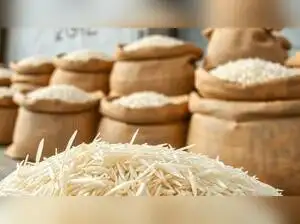Tags
Trump tafiff impact: Indians in US may have to eat Pakistani rice or pay 50% more for Indian imports
Synopsis
A new 50% tariff imposed by the US on Indian rice exports, effective August 27, threatens to significantly increase prices for the Indian diaspora in America. This could lead to a shift towards cheaper Pakistani alternatives.

The Indian diaspora in the United States may soon have to pay up to 50% more for rice imported from India— a staple in most households — or opt for Pakistani imports, after US President Donald Trump announced a steep 50% tariff on Indian rice exports.
The price hike is expected to take effect from August 27. India currently exports nearly 2.5 lakh tonnes of rice to the US every year, of which around 40% is the sona masuri variety grown in Andhra Pradesh and Telangana, while the remaining 60% is basmati, largely cultivated in Punjab, Haryana, Uttar Pradesh, and other northern states.
According to the Deccan Chronicle, Indians living in the US — whether for work, study, or business — typically consume sona masuri for everyday meals, while basmati is reserved for delicacies like biryani. Presently, sona masuri costs $900–$1,000 per tonne, and basmati $1,200–$1,300 per tonne. If Trump’s directive comes into force, prices could surge significantly, making Indian varieties far costlier than Pakistani alternatives.
Sources quoted by the Deccan Chronicle suggested the move may be aimed at pressuring the Indian diaspora in response to India’s purchase of Russian oil. Rice Exporters Association president B.V. Krishna Rao warned that the Indian community in the US will be “badly affected” but added that the full impact will be clearer in the coming weeks.
The Indian Express noted that Punjab — India’s largest producer of basmati with 40% of total output — will be among the hardest-hit states. India currently exports around 3 lakh metric tonnes (LMT) of basmati worth $350 million to the US annually, while Pakistan supplies about 1.8 LMT. With the new tariff, Indian basmati prices could jump from $1,200 to $1,800 per metric tonne (MT), compared to Pakistan’s $1,450 per MT, thanks to its lower 19% tariff — a $350 per MT difference.
Why the Tariff Was Imposed
Last week, the White House announced a 25% “Reciprocal Tariff, Adjusted” on Indian exports under an executive order titled Further Modifying the Reciprocal Tariff Rates, which covered nearly 70 countries. Tariffs range from 10% to 40% — Japan (15%), Sri Lanka (20%), Pakistan (19%), Laos and Myanmar (40% each), and the UK (10%).
Then on Wednesday, Trump added another 25% tariff on India specifically over its Russian oil imports, bringing the total duty to 50% — among the highest imposed on any nation. The additional levy will take effect 21 days after the announcement, i.e., on August 27.
India has called the move “unjustified and unreasonable” and said it will take all necessary steps to protect its national interests and economic security.
US-based nonprofit Indiaspora said the new duties are a “setback” in the otherwise strong people-to-people ties between India and the US, but expressed hope that the strain will be temporary.
https://economictimes.indiatimes.com/news/new-updates/trump-effect-indians-may-have-to-eat-pakistani-rice-or-pay-50-per-cent-extra-for-indian-import/articleshow/123185325.cms?from=mdrPublished Date: August 8, 2025






